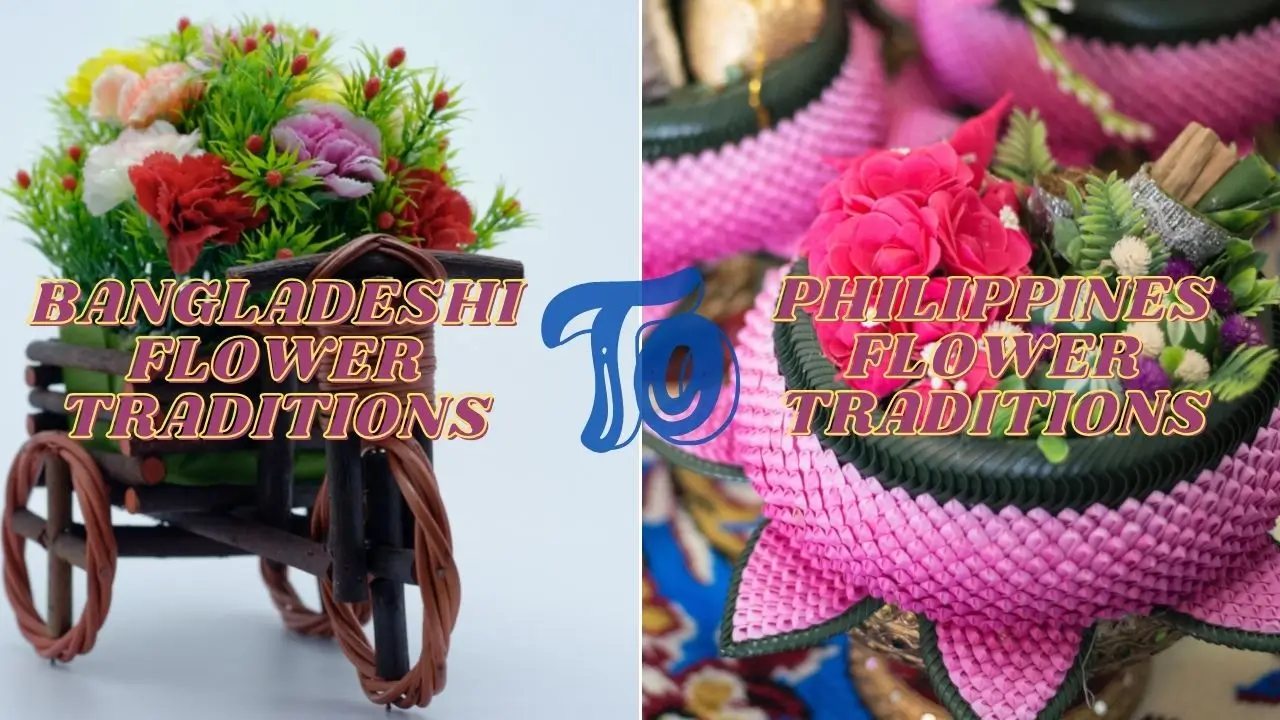
Flower arrangements aren't just pretty things but also powerful images of love, joy, and custom that reach across borders. Flowers are an essential part of the Philippines and Bangladesh culture. They can be found everywhere, from Manila's lively streets to Dhaka's busy markets. This blog explores how flowers connect these two countries, their significance in daily life and celebrations, and how you can bring a touch of Bangladeshi floral charm into your life.
Flowers are an essential part of everyday life in the Philippines. Filipinos use flowers to show how they feel and to mark important events, like when they offer Sampaguita (jasmine) garlands at church, have weddings with lush bouquets or send condolences with funeral wreaths.
Some flowers hold special significance in Filipino culture:
Filipinos also celebrate the beauty of flowers through festivals, such as:
Flowers are essential to Bangladesh's religious ceremonies, traditional rituals, and holidays. They are valued for their beauty and spiritual meaning. At weddings, the bride wears fresh flower jewelry, and bouquets are offered at shrines.
Flowers are deeply embedded in Bangladeshi festivals:
In both countries, flowers are seen as signs of love, hope, and faith. Although their customs and plants are different, they all respect flowers, which shows that flowers speak a global language.
For instance:
For Filipinos exploring the beauty of Bangladeshi floral traditions, here are some captivating practices:
Looking to experience the beauty of Bangladeshi flowers? Visit this Bangladeshi flower shop to explore a curated selection of floral arrangements inspired by the country’s rich traditions. Whether you’re searching for vibrant marigold garlands or elegant rose bouquets, this shop brings the essence of Bangladeshi culture right to your doorstep.
Bangladeshi flowers can add a unique flair to Filipino events. Here are some ideas:
Flower growing in the Philippines and Bangladesh is moving toward more environmentally friendly methods. As the need for eco-friendly flowers grows, flower shops in both countries buy flowers grown moderately to lessen their impact on the earth.
Flowers can bring people from different countries together. The Shapla roses in Bangladesh and the Sampaguita flowers in the Philippines are beautiful natural sights that remind us how much we are alike. By learning about and adopting their practices, we can make our events more fun and learn more about how different cultures use flowers.
Flowers are more than just pretty; they tell stories that connect different customs and countries. By learning about the traditional meanings of flowers in the Philippines and Bangladesh, we can better understand their beliefs, feelings, and events.
Let flowers help you feel closer to new customs. Flowers speak a language everyone can understand, no matter where you are. Are you ready to add Bangladeshi flowers to your party? Check out the unique collection at FloristBD.com!